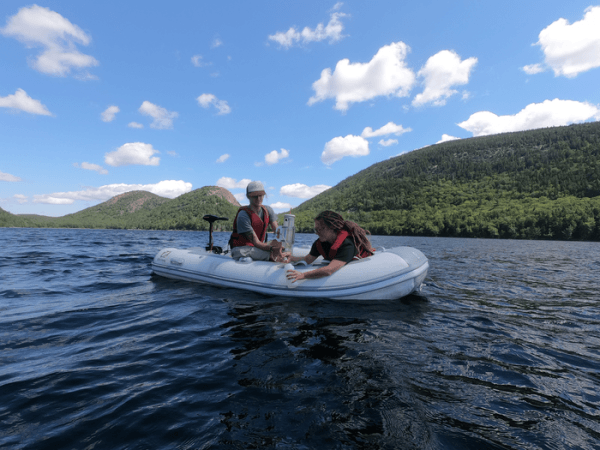Acadia National Park is known for its beautiful lakes — and they can tell scientists a lot about the health of the environment. New research shows that regulations to reduce human-caused sulfur in the atmosphere have made a difference for lakes in Acadia National Park, though climate change may slow that recovery.
Research from the 1990s showed that human-caused atmospheric pollution in the 20th century caused the acidification of lakes across eastern North America starting in the 1940s. Acidification of lakes causes the decrease of dissolved organic carbon in lakes, which impacts lake ecology and makes water appear clearer.
Since the Clean Air Act Amendments were federally enacted in 1990, the northeastern United States has received significantly less atmospheric acid depositions with the goal of restoring ecosystems like lakes that were impacted by the pollution. However, climate change can also impact lake water clarity, as rising temperatures drive the production and release of dissolved organic carbon, while shifts in precipitation caused by climate change also can bring in more organic matter.
Researchers from the University of Maine and the National Park Service wanted to see how these changing acidification dynamics were affecting the ecosystems in different types of lakes in Maine. In an article published in the Journal of Paleolimnology, scientists reconstructed historical pigment records of algae and diatoms — a particular type of algae with a silica shell, which is usually negatively impacted by acidification — from two lakes in Acadia National Park, Jordan Pond and Seal Cove Pond.
Despite being close geographically, the two lakes are very different. Jordan Pond is considered a “clear-water” or oligotrophic lake, meaning its waters are relatively low in plant nutrients with abundant oxygen at its depths. Seal Cove Pond is a “brown-water” or mesotrophic lake with a moderate amount of nutrients.
Read more at: University of Maine
Graduate students Matt Faragher and Vendy Hazukova take a water sample from Jordan Pond. (Photo Credit: C. Schmitt/Schoodic Institute)


